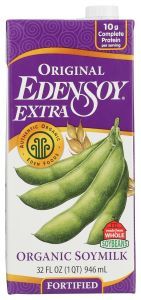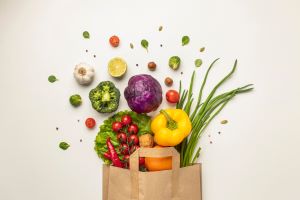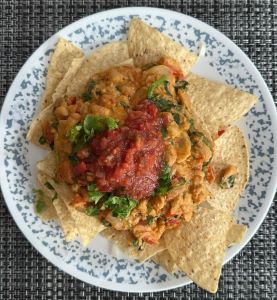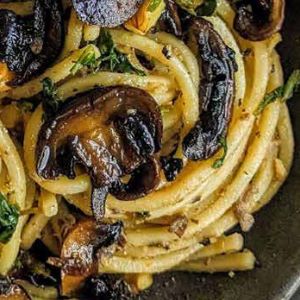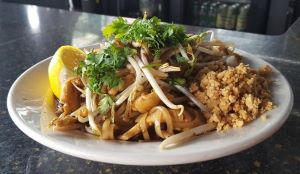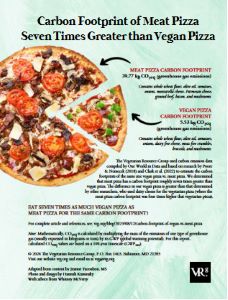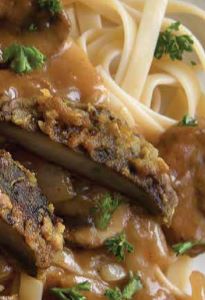Posted on
September 16, 2024 by
The VRG Blog Editor
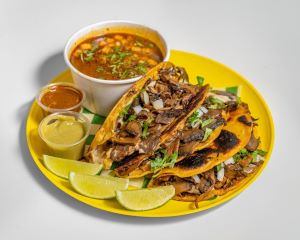
photo from Taqueria Vegana
The Vegetarian Resource Group maintains an online Guide to Vegan/Vegetarian Restaurants in the USA and Canada. Here are some recent vegan restaurant additions. The entire guide can be found here: www.vrg.org/restaurant
To support the updating of this online restaurant guide, please donate at: www.vrg.org/donate
Here are some new additions to VRG’s guide:
Cindy Snacks, 90A Washington Dr., Centerport, NY 11721
Cindy Snacks is much more than just a café, bakery, and deli because they also have a whole market! If you are looking for some good vegan snacks they are the place to go! You can grab some morning coffee, sandwiches, and a donut or two while also stuffing your pantry with fun vegan snacks. They put a lively turn on the pink-and-white aesthetic.
Grounds & Greens Café, 1369 Johnston Rd., White Rock, BC V4B 3Z3, Canada and A – 9124 Glover Rd., Langley, BC V1M 0E6, Canada
Grounds & Greens Café aims to focus on kindness, improvement, and sustainability. Making all their meals in house, they strive to provide nutritionally balanced, creative dishes, often with local ingredients. They list several gluten-free options. Also check their Current Promos for various Specials. There’s outdoor seating too. The witty menu includes several Bowl choices like Rice Rice Baby with crispy tofu, spicy peanut sesame sauce, soy mayo, cashews, cucumber, carrots, mango, and jasmine rice. Return of the Mac offers Cavatappi pasta, roasted mushrooms, cheesey sauce, parmesan, gremolata, and truffle oil. In the Bread section, Greens Toastie boasts pea and edamame hummus, tomato jam, avocado, crispy chickpeas, pickled red onions, basil, and tofu feta. Boujie Bread brings homemade ricotta, sautéed mushrooms, arugula, confit garlic and truffled walnut apple honey to name a few bread choices. There are lots of creative beverages to choose from! Here’s a peek at some sweet Treats: “butter cream”-iced Carrot Cake Cookie with candied pecans, Devil Wears Prada chocolate cupcake dolled up in beetroot and vanilla icing, Perfect Pear Doughnut paired with coconut pecan caramel icing, or Monkey Business Muffin taking dessert seriously with banana, walnut, chocolate chips and butter icing. But wait, there S’more Cookie with vanilla base, marshmallow and chocolate chips!
Khoe, 1370A E. Georgia St., Vancouver, BC V5L 2A8, Canada
Appetizers include Crispy Spring Rolls (filled with carrot, taro, vegan ground meat, mushroom, and vermicelli, served with vegan fish sauce) and Sweet Chili Tofu (crispy tofu tossed in sweet chili sauce, with crispy wonton chips and green onion). Bowls include Khoe Bowl (signature vermicelli salad bowl with crispy spring rolls, glazed tofu, and fresh salad, served with vegan fish sauce dressing), and Chick’n Vermicelli Bowl (marinated vegan lemongrass chick’n with a sweet & savoury soy glaze served on a vermicelli salad bowl, vegan fish sauce, and pickled veg.). They feature a “Combo for Two” (any 2 bowls plus a side or dessert of your choice). Banh Mi Sandwiches include Shroom Banh Mi (battered oyster mushroom with vegan red curry mayo, pickled veg, cucumber, cilantro, and Sriracha Revolver hot sauce). Baos include Chick’n Bao (marinated vegan lemongrass chick’n with a sweet and savoury soy glaze, vegan mayo, cabbage slaw, and cilantro). Dessert is Mango Tapioca (coconut tapioca dessert with mango purée topped with toasted coconut flakes and pistachios).
Rad Magic Subs, 2824 SE Gladstone St., Portland, OR 97202
Rad Magic Subs takes pride in supporting locally crafted vegan meats and condiments when possible! Local Portland residents love this charming restaurant. Each sub comes in exciting wrapping featuring a fun face motif, complete with their block print aesthetic. They have unique sandwiches as well as add-ons if you want to integrate more flavor! Their menu is very accessible and describes each sub’s flavor so you know exactly what you are getting. If you are a fan of imitation meats, try out the “Wedgewich” or “Golden One” which feature smoked deli slices. if you are more of a tofu fan they have that covered with their “Tofu-Two-Ways” and “Sunbeam.” During the summer the “Rad Magic” provides a refreshing bite and can be made into a gluten-free salad.
Sleepyhead Coffee, 735 Broad St., Chattanooga, TN 37402 and 2602 E. Main St., Chattanooga, TN 37404
Sleepy heads’ cute pink aesthetic complements their greenery and plants to create a cozy environment. Their delightful coffee and pastries provide a small treat to lighten your mood. The aesthetic of their coffee and treats rivals the atmosphere and each latte is complete with coffee-art. Their in house mugs match the pink atmosphere and can be filled with a variety of drink options. From classic expresso’s and cold brews to unique superfood blends and seasonal drinks, there is something for everyone. Their pastries are guaranteed to lift your mood with their fluffy textures and perfect portions.
Taqueria Vegana, 1543 Dupont St., Toronto, ON M6P 3S5 Canada
Their imitation meats are spot on. You can get an authentic carne asada taco or a loaded burrito. Each meal typically comes with chips and a flavorful sauce. Most reviews rave over the Taco Trio, which includes 1 Carne Asada, 1 impossible chorizo, and 1 Seitan Carnita. This dish gives you a selection of flavors that really highlight the authenticity of their tacos.
Vromage Cuisine, 7988 Sunset Blvd., Los Angeles, CA 90046
Owner started making vegan cheese in Los Angeles in 2009; made from nuts and “aged to perfection.” Salads include Caprese (mozzarella, tomato, and basil) and Organic Mixed Greens (Veganzola dressing and gluten-free bread crumbs). Open-Faced Sandwich (gluten-free or French sourdough bread with choice of Veganzola, Macon Brie, or Vromage Blanc). Vromage Platter (selection of Vromage served with nuts and fruit). Crunch Pizza (choice of Vromage served on crunchy crackers with mixed greens or arugula and tomato; Veganzola, mozzarella, or Vromage Blanc).
